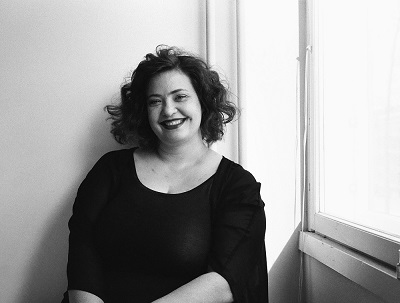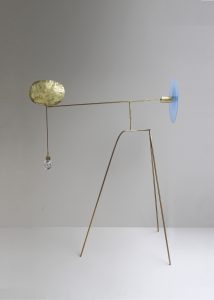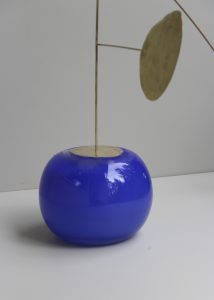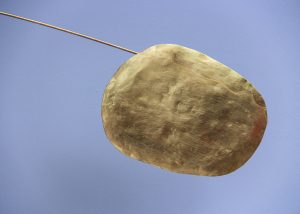Design Museum will open the exhibition of Helsinki-based furniture designer and artist Milla Vaahtera (1981) at Helsinki Design Week. The Dialogue exhibition is made of mobiles and stabiles that have been made from free-blown glass and hand-worked brass. The airy pieces revive the tradition of mobiles that was born in the 1930s. Vaahtera’s mobiles are built intuitively with a glassblower.
Vaahtera is a designer who has navigated her way through the fixtures and furniture industry, guided by her creativity and artistic approach. Vaahtera thinks that as an object, a mobile is located somewhere in the interface of an art piece and an interior fixture.
“In my work I want to stress development that is achieved by failing, experimenting and playing. My mistakes have helped my expression move in a more artistic direction. So-called mistakes develop both my own expression and the work I have underway,” Vaahtera explains.
“I think that today’s world, being based on perfection and mass production, has lost something essential. Flaws bring humanity and warmth to objects,” she says.
Mobiles as performative fixtures
“I have always found mobiles to be really interesting. The best thing about mobiles is their constant motion and of course the feeling of danger. A mobile, balanced in the air, is like a performative fixture,” Vaahtera describes.
Vaahtera became infatuated with glass from the moment she was first able to work with it. Glass works well as a material for mobiles as its fragility and form are best displayed in the air. The motion and filtration of light through the mobile breathes life into the object.
“Finding the final balance is really challenging. In the working phase, I use some really odd temporary weights and contraptions. I’ve also come up with a few tips of my own. However, I do think that mobiles are only built correctly when you take the time to wrestle with them as much as is needed.
Vision and form tie the pieces together
Vaahtera’s style of working is intuitive. She goes to the glassblowing cabin with an empty notebook and starts working from the ground up. In the back of her mind is a vision guided by intuition as well as a form of design style that has become her own. The pieces are born in the process and, beyond her vision, progress is dependent on Vaahtera’s glassblower as well as a bit of luck.
“I have notice that excessive control and orderliness only produce poor results. When you start to follow a certain plan too closely, you can no longer see the unpredictable beauty of glass. Glass is most beautiful when it is in its melted form. The best thing is to let it find its form as freely as possible,” Vaahtera says.
Working without a clear plan or goal can be scary, as well.
“When you’ve reserved an expensive day with a glassblower, of course you hope that you’ll end up making something great.”
The glass pieces are created by the designer and craftsman together
The final product born in the glassblowing hut is most affected by the almost symbiotic working relationship between Vaahtera and the glassblowers.
“The glassblowers work and I draw up drafts and brainstorm when the glass is already on the blowpipe. I have trusted glassblowers with whom I have formed a cooperative relationship and mutual style of working. The relationship is important, as the glassblower has a double role in the work; they are both craftsmen and artists,” Vaahtera explains.
The designer describes her style of working as extremely sensitive, as it requires constant communication and mutual understanding as well as respect for one another’s professional skills.
“We each have our own approach both to the process and the final product. Often it so happens that a final product that I find to be great is a total failure in the glassblower’s opinion. They don’t always understand that I am genuinely satisfied with a technically “unsuccessful” piece.”
Vaahtera’s exhibition will open at Design Museum for Helsinki Design Week on September 7, 2018.
Design Museum’s business network, Design Club, organized Open Call at the end of 2017, which searched for new types of space installations for Design Museum’s Gallery. The international search attracted applications from 52 designers and design teams. Milla Vaahtera’s installation, Dialogi, fascinated the jury with its intuitive approach, the final product of cooperative work and the new interpretation of the mobile. Helsinki Design Week is also a part of the Design Club business network.




